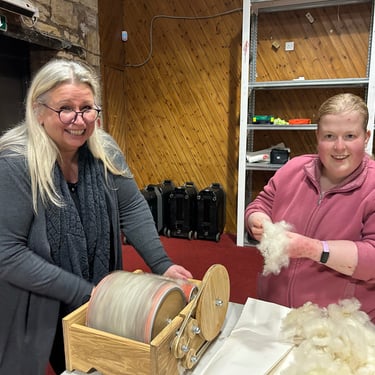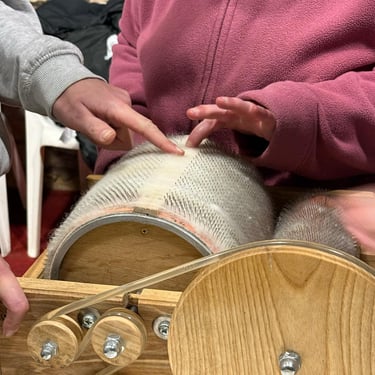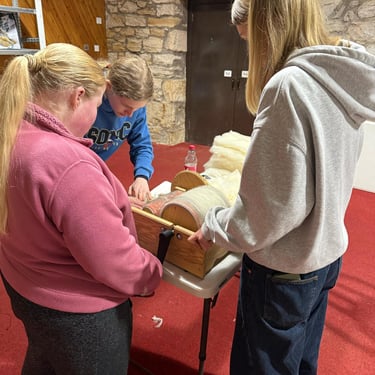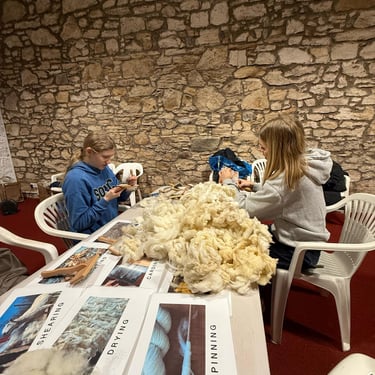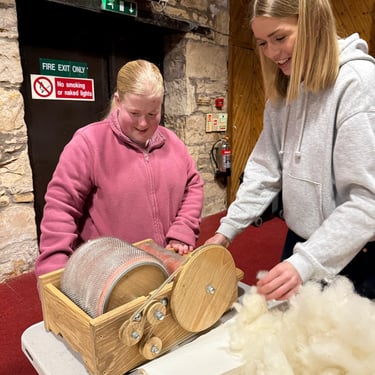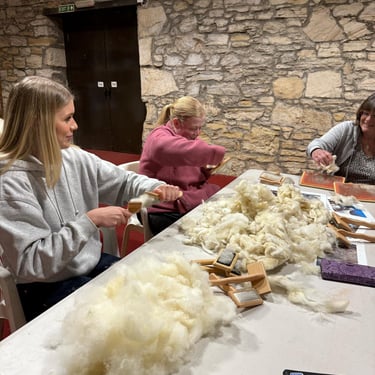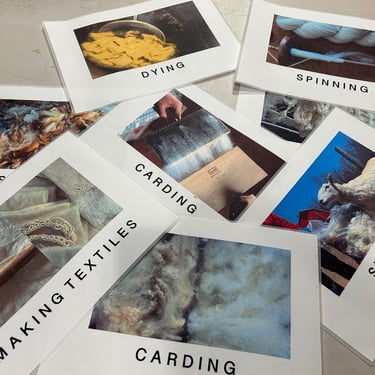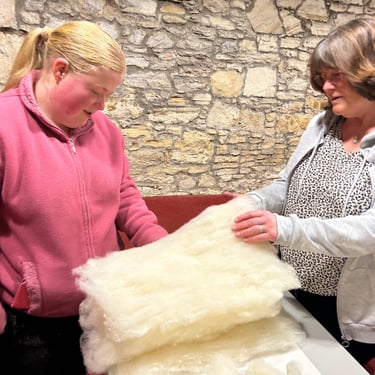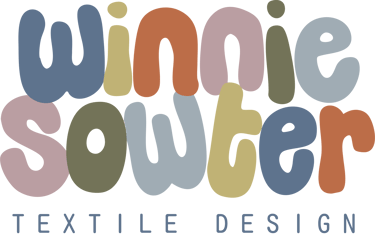Raw Fleece and Carding Workshop
2/26/2025
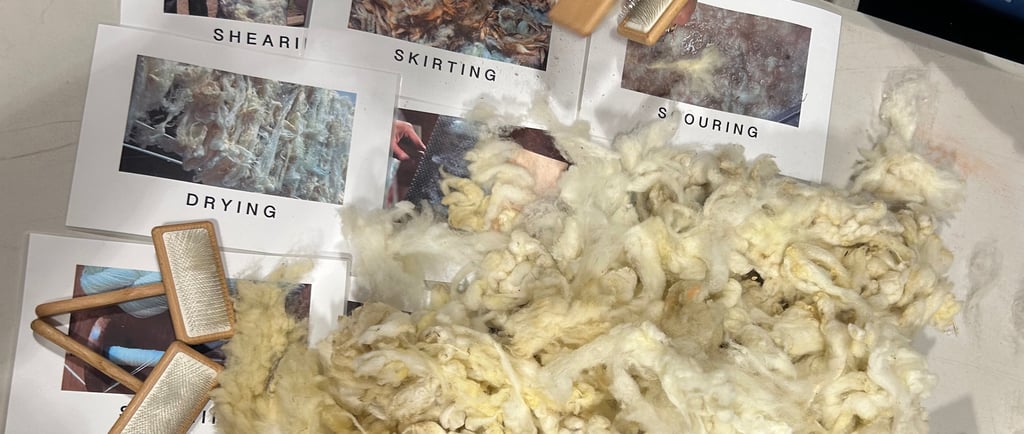

Today was Week 2 of our Lucky Ewe workshops and we began exploring raw fleece and wool processing. The aim was to introduce the interns to the journey of wool, from sheep to fibre, through hands-on activities like touching raw fleece, learning about wool’s properties, and trying out wool carding.
We started with an icebreaker where everyone was given a piece of raw fleece to handle (gloves were optional for those who weren’t too keen on the lanolin and bits of farm life still clinging to it!) The interns all have experience working with the sheep so took to this without much hesitation. There were comments made about the natural softness of the wool, the greasy texture from the lanolin and everyone had a lot to say about the natural sheepy smell! We compared raw wool to processed wool, and the interns were quick to notice the difference in texture, cleanliness, and even weight. I found both last week and this week that giving people the chance to just explore before explaining anything is a good way to get the group thinking and start conversation flowing.
Next, we walked through the sheep-to-fiber journey using image cards, talking about shearing, skirting, scouring, carding, and spinning. The interns were really interested in the shearing process and some had never considered that sheep need to be sheared for their welfare not just for wool. The True or False wool game ended up being integrated throughout the session which actually worked really well. It meant the prompts were more naturally used to keep conversation flowing. There was plenty of debating over whether wool is naturally waterproof and whether it is fire-resistant or not! Even though the group are fairly knowledgeable about sheep and wool, I found it quite difficult to explain the transition into textiles. I managed to find a video of wet felting to show the interns which they were quite gripped by. This made me think about maybe introducing more visuals or even video clips of the wool to textile processes (spinniging, felting etc.), as some interns were really keen to see the process in action rather than just hearing about it.
The highlight of the session was definitely wool carding and it was nice to actualy start working with the wool. I demonstrated how to use hand carders to smooth and align the fibers, then showed how a drum carder speeds up the process. The interns had a go with hand carders first and tried different sizes to see which felt most comfortable to them. Most people went for the medium size which surprised me as I thought the big carders would be the most popular. Some found it hard to get the technique right at first but it was nice to see everyone sharing tips and tricks with eachother as they were learning more about the process. The drum carder station was definitely a favourite and everyone was amazed by how quickly we could produce soft bats of wool from the smaller pieces. When I asked the interns and volunteers to describe how they felt people used words such as "springy" "bouncy" "soothing" and "fluffy".
We finished by comparing raw vs. carded wool and discussing how this process makes it easier for spinning, felting, and other textile design. I think everyone found the transformation really satisfying to see, and it gave the group a real appreciation for the effort that goes into preparing wool before it becomes yarn or fabric.
By the end of the workshop, it was amazing to see how much the interns had learned, not just about wool but about the patience and skill required in traditional fiber crafts. Whilst carding there was a lot of group reflection on how it made them feel, people said they felt relaxed and it took their mind off other things. The group were also suprised at how quickly time went when we were just sitting and talking and carding without any outside distractions. Some of the interns said they’d never really thought about wool beyond their farming knowledge and now they were curious to see what else they could make with it. We had a lot of chat about design ideas and colours they would like for next weeks wet felting workshop. One thing I did notice is that some people in the group found the carding quite physically demanding so next time, I might factor in more time for breaks or even split into small groups doing different activities so that everyone gets a chance without getting too tired.
Overall, it was a great session, full of curiosity and laughter. I can’t wait for next week’s workshop!
